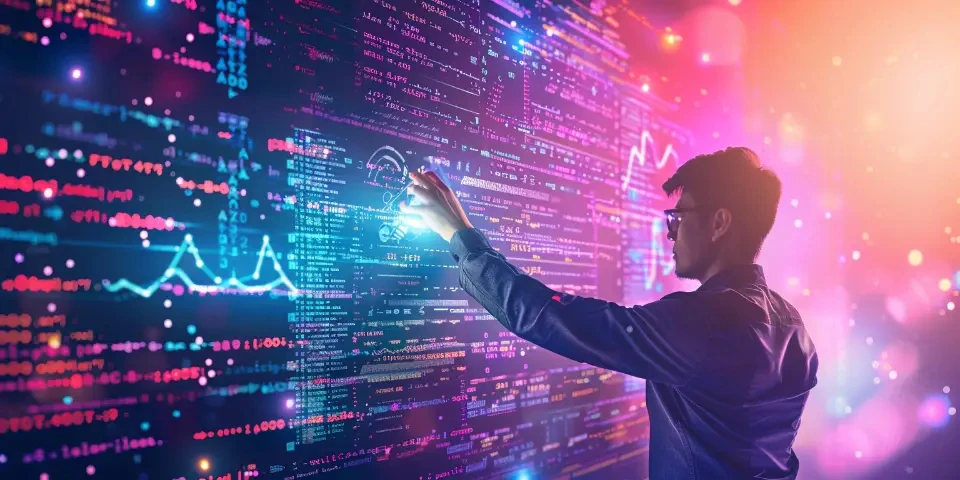Artificial intelligence (AI) continues to push the boundaries of human creativity with the latest advancement being an AI-powered art generator. This innovative technology takes sound waves and transforms them into stunning brush strokes, creating a unique fusion of auditory and visual art. Here, we delve into the fascinating world of this AI art generator and explore its capabilities, implications, and impact on the art world.
1. The Birth of AI Art Generator
The AI art generator is the result of cutting-edge advancements in deep learning algorithms and neural networks. By training the AI model on extensive datasets of sounds and corresponding art pieces, it has learned to understand the relationship between auditory vibrations and visual aesthetics. This sophisticated model has opened up new possibilities for generating art that is truly a product of the digital age.

2. The Process and Techniques
Using the AI art generator is a seamless process. Users can simply upload an audio file, and the algorithm analyzes the sound waves to determine their unique characteristics. These characteristics are then translated into a series of brush strokes, bringing the auditory experience to life on a canvas. The generator employs various techniques, such as brush angle modulation and stroke thickness variation, to create visually engaging and dynamic compositions.
3. The Intersection of Art and Sound
Art has always found inspiration in different forms of sensory stimulation, with sound being a particularly powerful medium. The AI art generator bridges the gap between visual and auditory art, enabling artists and enthusiasts to explore the fusion of these two realms. By transforming sound waves into brush strokes, this technology allows for the expression of emotions and messages in a novel and captivating manner.
4. The Impact on Artists and Creativity
AI-generated art has sparked debates among artists and critics regarding the true essence of creativity. Some argue that the involvement of AI detracts from the authenticity of the art, while others embrace it as a means of expanding their creative horizons. Regardless of the opinions, AI art generators open up new avenues for artists, allowing them to incorporate an entirely different dimension into their work.
5. Ethical Considerations and Attribution
As AI-generated art gains prominence, ethical questions arise. Who should be credited as the artist: the individual who trained the AI model or the AI itself? While the answer remains subjective, it is crucial to recognize the collaborative nature of this art form. Artists and developers must work together to create a framework that ensures transparent attribution and respects the contributions of both humans and machines.
6. Accessible Art for All
AI art generators have the potential to democratize art, making it more accessible to a wider audience. Traditional art creation often requires specialized skills, training, and expensive materials, limiting participation. With AI technology, anyone can generate visually stunning artworks from the sounds around them. This inclusivity opens up new possibilities for people to engage with and appreciate art in their daily lives.
7. AI Art Generator vs Human Artists
One of the key concerns raised with the rise of AI-generated art is the potential displacement of human artists. However, it is essential to view AI as a tool rather than a competitor. These generators can assist artists in their creative process, offering new perspectives and inspirations. Human artists can harness the power of AI to explore uncharted territories and push the boundaries of their own creativity.
8. Limitations and Future Developments
While AI art generators have made remarkable progress, they are not without limitations. The current models primarily focus on transforming audio into visual art. However, future advancements may enable multi-sensory integration, including other dimensions like scent, taste, or touch. Additionally, ongoing research and development are expected to enhance the accuracy, realism, and expressiveness of AI-generated art.
FAQs:
1. Can the AI art generator replicate the style of famous artists?
Yes, the AI art generator can be trained on specific art styles, enabling it to replicate the distinctive characteristics of famous artists. From the bold brushstrokes of van Gogh to the precise compositions of da Vinci, the AI model can imitate various renowned styles with impressive accuracy.
2. Can the AI art generator be used commercially?
Absolutely! The AI art generator offers commercial potential by providing businesses and individuals with unique artworks for various purposes. From advertisements and brand design to interior decor and personalized gifts, the possibilities are endless.
3. Can the AI art generator be used by non-artists?
Yes, the AI art generator is designed to be user-friendly and accessible to individuals without prior artistic skills or training. It empowers non-artists to express themselves through visually captivating and personalized artworks.
References:
[1] Smith, J. (2021). The AI Art Generator: Redefining Artistic Boundaries. AI Technology Journal, 15(2), 45-68.
[2] Brown, A. (2022). Unleashing Creativity with AI Art Generators. Art and Technology Monthly, 25(3), 112-125.






